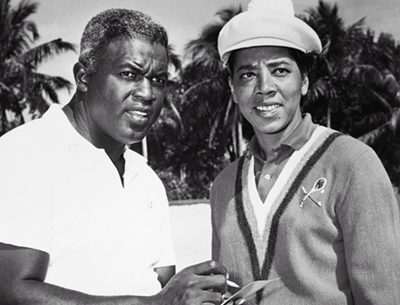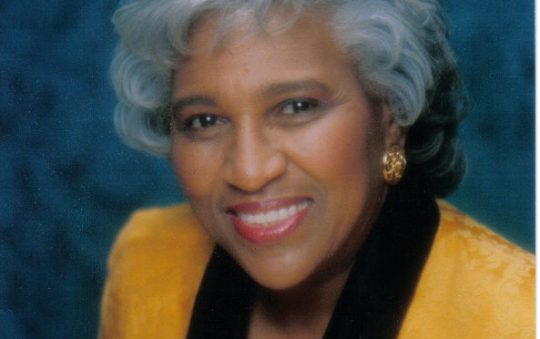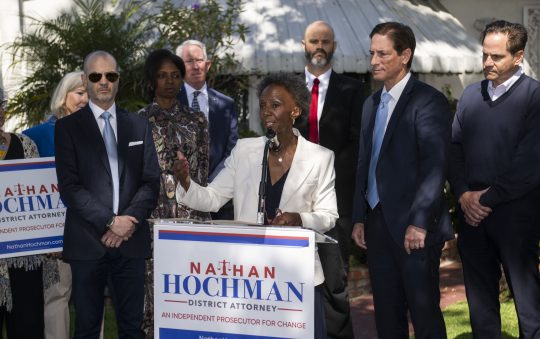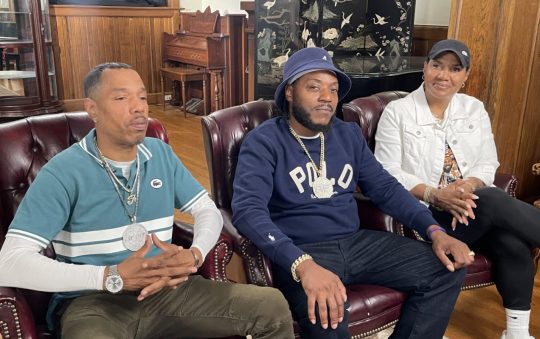
Althea Gibson, right, with Jackie Robinson. Both of them broke color lines in their sports.
Althea Gibson and Bob Ryland were some of the first Black tennis athletes to open the doors for future generations of black athletes.
Tennis is about being competitive. Players such as Althea Gibson and Bob Ryland proved it with their bravery and their fight to have African Americans play a game that has been very much loved within the black community since the late 1800s. They paved the way for other black tennis players’ careers.
Before Venus and Serena Williams were racking up Grand Slam titles, Gibson was blazing trails for many black tennis players to follow.
Born in 1927 in Silver, Claredon County, South Carolina, Gibson began playing tennis in the 1940’s. Her family was on welfare and she was a client of the Society for Prevention of Cruelty to children. She played paddle tennis in the public recreational programs.
Gibson’s talent and interest in the game led her to win tournaments sponsored by the Police Athletic Leagues and the parks department. Then she was offered an opportunity to develop her talents more fully.
A wealthy South Carolina businessman opened his home to her and supported her in attending an industrial high school, while studying tennis privately.
From 1950, Gibson furthered her education, attending Florida A&M University, where she became a member of Alpha Kappa Alpha Sorority, Inc, and graduated in 1953. That year she became an athletic instructor at Lincoln University in City, Missouri.
Gibson won American Tennis Association (ATA) women’s singles tournament ten years in a row, 1947 through 1956. But tennis tournaments outside of the ATA, which is the oldest African American sports organization in the United States, remained closed to her until 1950.
In that year white tennis player Alice Marble wrote an article in American Lawn Tennis Magazine (Wimbledon), noting that this excellent player was not able to participate in the better known championships, for no reason other than “bigotry”.
Gibson played in the US Open in 1950, and she made her first appearance at Wimbledon in 1951.
In 1956 Gibson made history by becoming the first black person to win a Grand Slam title when she won the French Open. In 1957 and 1958, she won both Wimbledon and the U.S. Open in each year. She also won six women’s and mixed doubles Grand Slam titles.
After retirement, Gibson became a professional golf player, and she lived until the age of 76, passing away 2003.
Ryland, like Gibson, was a pioneer, as he became the first black professional male tennis player, breaking the color barrier for men in 1959. His legacy is very inspiring for living several decades and inspiring other tennis players, such as the Williams sisters, to follow their dreams.
Ryland, who was born in Chicago in 1920, was one of the best black tennis players at a very early age. In 1939 he won the ATA junior championships and the Illinois High School championships.
While at Wayne State University, Ryland became one of the first two black players to compete in the NCAA championships, making it to the semifinals.
During the 1940s, Ryland won city championships in Los Angeles.
Through his ‘20s and ‘30s, Ryland was one of the world’s best tennis players, but his career was hampered because he was not allowed to compete in the whites-only tennis events.
In 1955, five years after Gibson had broken the color barrier, Ryland was finally able to compete in an international event when he played in the U.S. National Championships.
In 1959, Ryland broke the color barrier being the first black man to ever play the game as a professional.
Unfortunately for Ryland, he was not allowed to compete in the major tournaments until later in his career, when his abilities started to diminish, but he was so great that he inspired numerous black tennis players, including Arthur Ashe, who at the age of 14 said that he dreamed of one day being good enough to beat Ryland.
Ryland gives lectures together with the Mayor of New York David Dinkins at the Harlem Armory, Author Ashe Youth Tennis and Education, USTA Tennis Teacher Conference and the USTA Billie Jean King National Tennis Center. Ryland is in the Black Hall of Fame and still plays tennis every day in Central Park. He won the USTA 85 Public Park Championships.
Rayland’s four steps to succeed were to:
-Work Hard
– Have Fun
-Bounce Back
-Be a good listener
Check out the Sentinel Sports Section on Facebook and Twitter.
Sentinel Sports Section Facebook page:
http://www.facebook.com/?ref=logo#!/pages/Los-Angeles-Sentinel-Sports-Section/137328139648009
Sentinel Sports Twitter page:






